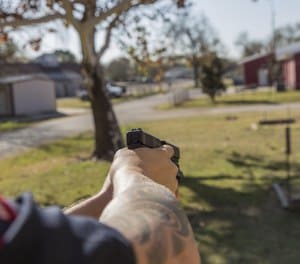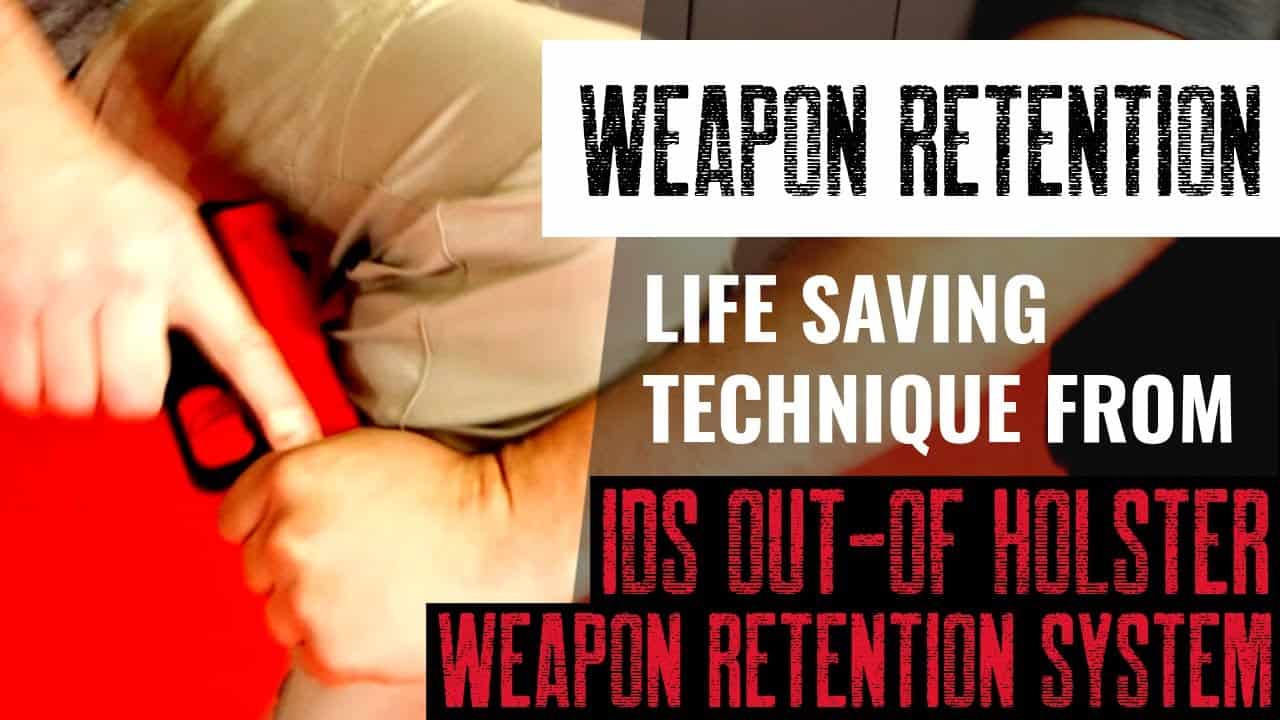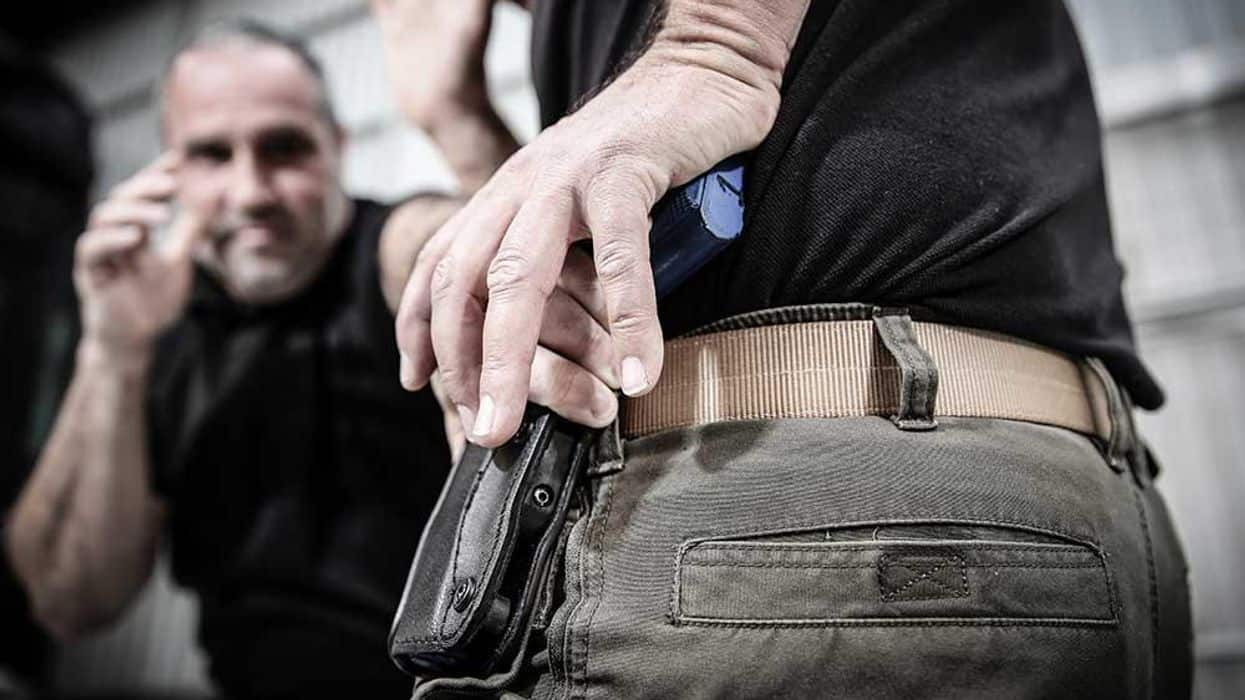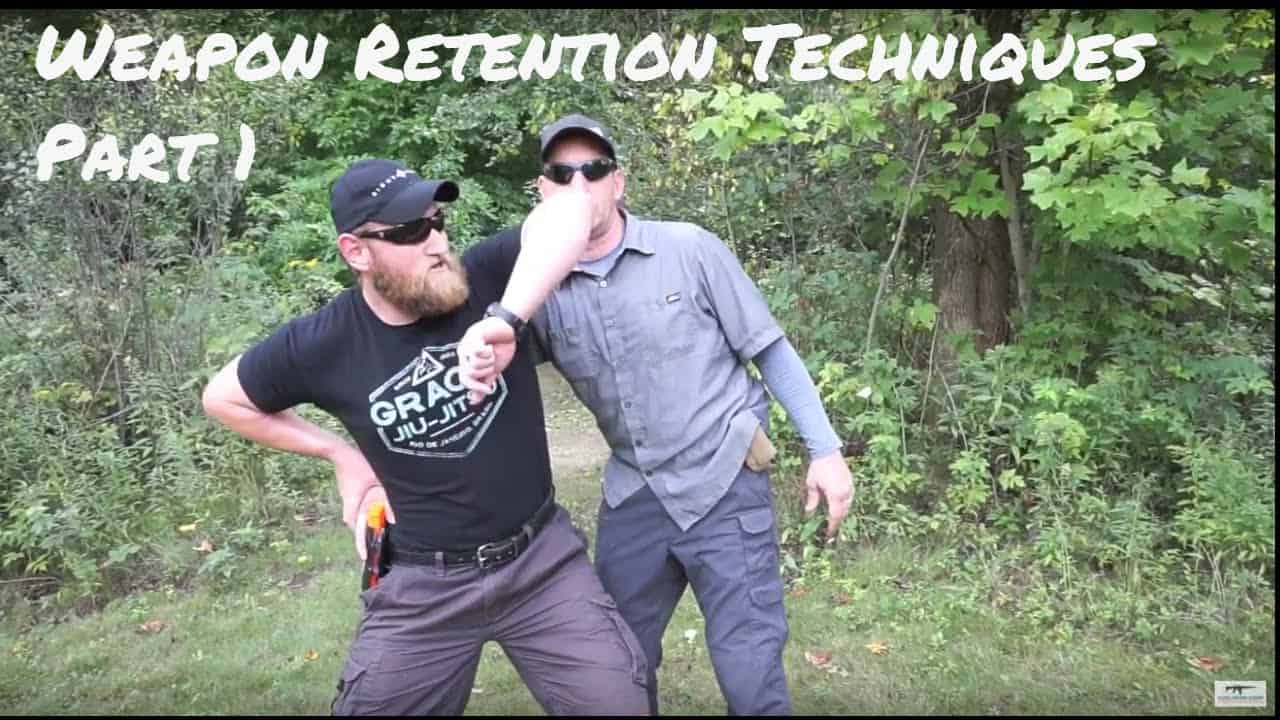Contents
- 1. Introduction to Holster Retention Techniques
- 2. Importance of Holster Retention in Firearm Safety
- 3. Exploring Level I Holsters: Features and Benefits
- 4. Understanding Level II Holsters: Enhanced Security Measures
- 5. Level III Holsters: Advanced Retention Systems for High-Risk Situations
- 6. Factors to Consider When Choosing the Right Holster Retention Level
- 7. Common Misconceptions about Holster Retention Techniques
- 8. Frequently Asked Questions about Holster Retention Techniques
- 1. What are holster retention techniques?
- 2. Why is holster retention important?
- 3. What are Level I holsters?
- 4. What distinguishes Level II holsters from Level I holsters?
- 5. Are there any disadvantages to using higher-level holsters?
- 6. Can holster retention techniques impede quick access when needed?
- 7. How can I improve my proficiency with holster retention techniques?
- 8. Are there any legal requirements for using holsters with retention features?
1. Introduction to Holster Retention Techniques

Holster Retention Techniques are vital for anyone who carries a firearm. These techniques ensure that the weapon remains securely holstered, even during dynamic movements or potential altercations. In this article, we will delve into the different levels of holster retention and explore their significance in maintaining safety and control.
The Importance of Holster Retention
When it comes to carrying a firearm, whether for law enforcement, self-defense, or recreational purposes, holster retention is paramount. A properly retained firearm minimizes the risk of accidental discharges or unauthorized access by others. It also prevents the weapon from being easily snatched away in a confrontation.
Level I Holsters: Basic Security
Level I holsters are designed with a primary focus on accessibility while providing basic security measures. These holsters typically feature passive Retention Systems that rely on friction or tension to keep the firearm in place. They are suitable for everyday carry situations where quick access is essential but minimal protection against intentional weapon grabs is required.
Examples of Level I holsters include popular options like belt slide holsters and inside-the-waistband (IWB) holsters that provide comfort and ease of use.
Level II Holsters: Enhanced Security
Moving up to level II holster retention adds an extra layer of security without compromising accessibility too much. These holsters incorporate active retention mechanisms alongside passive ones. The addition of thumb breaks, straps, or hoods ensures that the firearm remains securely held until intentionally released by the user.
Law enforcement officers often prefer level II holsters due to their increased protection against snatch attempts without sacrificing speed during high-stress situations. Some examples include duty rigs with thumb-operated release buttons or strap systems integrated into tactical leg platforms.
Level III Holsters: Maximum Security
For those seeking the highest level of security, level III holsters offer the utmost protection against weapon grabs. These holsters combine both passive and active retention systems, requiring multiple steps to draw the firearm. They often feature hoods or rotating locks that add an extra layer of defense.
Level III holsters are commonly utilized by law enforcement agencies and military personnel who operate in high-risk environments. These holsters provide peace of mind knowing that their firearms will remain securely in place until intentionally released.
In conclusion, understanding holster retention techniques is crucial for those who carry firearms. Level I, II, and III holsters offer varying levels of security while ensuring quick access when needed. Choosing the appropriate level of retention depends on individual needs, situational requirements, and personal preferences. By prioritizing safety through proper holster selection and training, individuals can confidently carry their firearms while minimizing potential risks.
2. Importance of Holster Retention in Firearm Safety

When it comes to firearm safety, one crucial aspect that often goes overlooked is holster retention. The way your firearm is secured in its holster can make a significant difference in preventing accidental discharges and unauthorized access to your weapon. Let’s delve into the importance of holster retention techniques and why they are vital for every responsible gun owner.
The Role of Holster Retention
Holster retention refers to the ability of a holster to retain the firearm securely, even during physical activities or potential altercations. It ensures that your weapon remains firmly in place and doesn’t accidentally fall out or get grabbed by someone else.
By choosing a properly designed, high-quality level I, II, or III holster with adequate retention features, you significantly reduce the risk of unintentional discharges. Whether you’re participating in strenuous physical activities like running or engaging in close-quarter combat scenarios, proper holster retention ensures your firearm stays where it should be until you need it.
In addition to avoiding accidental discharges, good holster retention also plays a crucial role in preventing unauthorized access to your firearm. This is especially important if you have children at home or if there’s any chance others may come into contact with your weapon without permission.
A securely retained firearm makes it more difficult for someone else to remove it from its holster without your knowledge and authorization. By using holsters with different levels of retention mechanisms tailored to specific situations (such as level II holsters for law enforcement officers), you add an extra layer of security against theft or misuse.
Selecting the Right Holster Level
The level of holster retention needed largely depends on various factors such as your profession, lifestyle, and personal preferences. Level I holsters generally feature passive retention mechanisms and are suitable for everyday carry by responsible civilians.
On the other hand, law enforcement officers may prefer level II or even level III holsters that incorporate additional active retention systems like thumb breaks or automatic locking devices. These advanced retention features offer enhanced security in high-risk situations where an officer’s firearm needs to be safeguarded against potential grabs or dislodgment.
Ultimately, it’s essential to choose a holster that matches your specific needs while keeping safety as the utmost priority.
Maintaining Holster Retention
To ensure optimal holster retention over time, regular maintenance is crucial. Dirt, debris, and wear can negatively affect the effectiveness of your holster’s retention mechanisms. Clean your holster regularly using manufacturer-recommended cleaning products and inspect it for any signs of damage or excessive wear.
Additionally, familiarize yourself with proper drawing techniques from a securely retained holster to avoid accidental discharges or struggling when you need quick access to your firearm.
In conclusion, understanding the importance of holster retention in firearm safety is essential for responsible gun owners. By choosing the right level of holst
3. Exploring Level I Holsters: Features and Benefits

1. Lightweight and Comfortable Design
Level I holsters are known for their lightweight construction, making them a popular choice among concealed carry enthusiasts. These holsters are typically made from durable materials such as Kydex or polymer, which provide excellent retention while keeping the weight to a minimum. The lightweight design ensures that the holster doesn’t add unnecessary bulk or discomfort when worn.
2. Quick and Easy Access
One of the key features of Level I holsters is their quick and easy accessibility. These holsters offer a smooth draw, allowing users to quickly retrieve their firearm when needed. With an open-top design, Level I holsters eliminate any additional steps or mechanisms that could slow down the draw process in critical situations.
3. Secure Retention Mechanism
While Level I holsters may not have as many retention features as higher-level options, they still provide adequate security for everyday carry purposes. Most Level I holsters utilize friction retention or passive locking systems to keep the firearm securely in place during normal activities while ensuring a swift draw when required.
4. Versatile Mounting Options
Level I holsters offer various mounting options to accommodate different carrying preferences. They can be worn inside the waistband (IWB), outside the waistband (OWB), Appendix Carry, or even on ankle rigs depending on personal preference and comfort level.
5. Cost-Effective Solution
Compared to higher-level retention holsters, Level I options tend to be more budget-friendly without compromising on functionality or reliability. This makes them an attractive choice for those who prioritize affordability without sacrificing essential safety measures.
In conclusion, Level I holsters combine lightweight design with quick access and secure retention mechanisms that make them a popular choice for concealed carry. Their versatility in mounting options and cost-effectiveness further contribute to their appeal among firearm enthusiasts. Whether you’re an experienced carrier or a newcomer to concealed carry, Level I holsters offer practicality and peace of mind in your everyday carry setup.
4. Understanding Level II Holsters: Enhanced Security Measures

Level II holsters are designed to provide enhanced security measures for firearm retention, ensuring that the weapon remains securely in place even during vigorous movement or physical altercations. These holsters are commonly used by law enforcement officers, military personnel, and concealed carry permit holders who require a higher level of protection.
The Two Levels of Security in Level II Holsters
Level II holsters incorporate two primary mechanisms to secure the firearm: a thumb break strap and a hood or strap that covers the back of the slide. The thumb break strap is an adjustable strap that snaps over the back of the firearm’s grip, providing an additional layer of retention. This strap is typically secured with a snap button or hook-and-loop closure system.
The second mechanism consists of a hood or strap that covers the back portion of the slide, preventing any accidental dislodging or unauthorized access to the weapon. This additional layer provides increased security against attempts to snatch or grab the firearm.
The Importance of Thumb Break Straps
Thumb break straps play a crucial role in enhancing weapon retention by requiring deliberate action to release and draw your firearm from its holster. They add an extra barrier against accidental discharges and unauthorized access while allowing quick access when needed.
When drawing your weapon from a Level II holster with a thumb break strap, you must use your dominant hand’s thumb to release it before executing your draw stroke effectively. This deliberate action ensures that only you have control over accessing your firearm while minimizing any risk associated with unintentional releases.
Hooded Backstraps for Extra Protection
The inclusion of hooded backstraps on Level II holsters offers another layer of defense against potential threats attempting to disarm you. These hoods cover and protect both sides and top portions at the rear end of your slide, making it significantly more challenging for anyone to gain unauthorized access or forcefully remove your firearm from the holster.
The hooded backstraps are typically released using a specific motion or mechanism, such as a thumb-activated button or a push-button release system. This deliberate action ensures that only the holster owner can easily and quickly access their weapon while maintaining a high level of security against unauthorized attempts.
In conclusion, Level II holsters provide enhanced security measures for firearm retention through the use of thumb break straps and hooded backstraps. By incorporating these features, these holsters offer an added layer of protection and peace of mind for law enforcement officers, military personnel, and responsible gun owners who prioritize safety.
5. Level III Holsters: Advanced Retention Systems for High-Risk Situations
Level III holsters are designed to provide advanced retention systems specifically tailored for high-risk situations. These holsters offer an extra layer of security and are commonly used by law enforcement officers, military personnel, and armed professionals who require a higher level of weapon retention.
The Importance of Level III Holsters
In high-risk situations, such as intense physical confrontations or potential firearm grabs, it is crucial to have a holster that ensures the utmost security for your weapon. Level III holsters go beyond basic retention mechanisms found in lower-level holsters by incorporating additional features that prevent unauthorized access to the firearm.
Advanced Retention Mechanisms
Level III holsters typically incorporate multiple retention mechanisms that work together to secure the firearm in place. These mechanisms often include thumb breaks, hood guards, rotating hoods, or combination locks that must be disengaged before drawing the weapon.
The thumb break is a common feature found in Level III holsters and provides an extra layer of protection by securing the firearm with a snap closure mechanism. This allows quick access while preventing accidental release or unauthorized removal.
Another advanced feature is the rotating hood system which involves a protective cover over the back end of the slide or hammer area of the handgun. It can only be opened when specific buttons are simultaneously pressed or when certain movements are made with your hand during drawing.
Enhanced Security without Sacrificing Accessibility
While Level III holsters prioritize enhanced security measures, they also ensure quick and efficient access to your weapon when needed. The incorporation of these advanced retention systems does not hinder smooth draw speed but rather adds an additional step in releasing the firearm from its holster.
These sophisticated mechanisms allow users to develop muscle memory through regular training drills so that accessing their weapons becomes second nature, even under high-stress situations.
Training and Familiarization
To effectively utilize Level III holsters, proper training and familiarization are crucial. Law enforcement officers and armed professionals undergo extensive training to ensure they can quickly and safely draw their weapons when necessary.
Regular practice sessions are essential for becoming proficient in using Level III holsters. By repeatedly going through drawing drills, users can develop the required skills to overcome the additional retention mechanisms efficiently.
Choosing the Right Level III Holster
When selecting a Level III holster, it is important to consider factors such as comfort, fit, durability, and overall quality. Investing in a reputable brand that specializes in manufacturing high-quality holsters is highly recommended to ensure reliable performance in demanding situations.
Additionally, it is crucial to choose a holster that fits your specific firearm model perfectly. Ill-fitting holsters may compromise both security and accessibility.
In conclusion, Level III holsters offer advanced retention systems designed for high-risk situations. Their incorporation of multiple retention mechanisms ensures enhanced security without sacrificing accessibility. Proper training and familiarization are essential for utilizing these holsters effectively. When selecting a Level III holster, prioritize comfort, fit, durability, and overall quality while choosing a reputable brand suited for your firearm model’s specifications
6. Factors to Consider When Choosing the Right Holster Retention Level
When it comes to choosing the right holster retention level, there are several factors that you should take into consideration. Each retention level offers different advantages and drawbacks, and understanding these factors can help you make an informed decision based on your specific needs and preferences.
1. Accessibility
One of the most important factors to consider is how easily accessible your firearm needs to be. If you require quick access in high-stress situations, a Level I holster may be the best option for you. These holsters offer minimal retention, allowing for a smooth and fast draw. On the other hand, if security is more important than speed, a Level III holster with multiple locking mechanisms might be more suitable.
2. Security
The level of security provided by a holster is crucial when considering which one to choose. If you carry your firearm in public or have concerns about potential weapon grabs, opting for higher levels of retention such as Level II or III can provide added peace of mind. These holsters typically feature additional locking mechanisms that require deliberate actions to release the firearm.
3. Comfort
Comfort plays an essential role in carrying a firearm regularly without feeling restricted or burdened by its weight or position on your body. Different retention levels may affect comfort differently due to variations in design and materials used in their construction. It’s important to try out different holsters with various retention levels before making a final decision.
4. Training
Consideration should also be given to your training level and experience with firearms when selecting a holster retention level. Higher levels of retention generally require more practice and muscle memory development during drawing exercises compared to lower-level options like Level I holsters which allow for quicker draws but offer less overall security.
5. Legal Requirements
It is crucial to consult local laws and regulations regarding holster retention levels before making a decision. Some jurisdictions may have specific requirements or restrictions on the types of holsters allowed for concealed carry or open carry. Ensure that your chosen holster complies with all relevant legal obligations.
6. Concealment
If you intend to carry your firearm concealed, the holster’s retention level can impact how well it remains hidden under clothing. Higher-level retention holsters tend to be bulkier and may require additional covering garments to maintain concealment effectively. On the other hand, Level I holsters are often more compact and easier to conceal.
Considering these factors when choosing the right holster retention level will help you find a balance between accessibility, security, comfort, training requirements, legal compliance, and your specific needs for concealing your firearm effectively. Remember that personal preferences also play a significant role in finding the perfect fit for you as an individual gun owner or carrier.
7. Common Misconceptions about Holster Retention Techniques
1. Retention holsters are unnecessary for everyday carry
One common misconception about holster retention techniques is that they are only necessary for law enforcement or military personnel. However, the truth is that anyone who carries a firearm should consider investing in a retention holster. Accidents can happen to anyone, and having a secure holster can prevent unauthorized access to your weapon.
2. All retention holsters are the same
Another prevalent myth is that all retention holsters offer the same level of security. In reality, different levels of holsters exist – Level I, II, and III – each providing varying degrees of protection against unauthorized access or attempts to disarm you. It’s essential to understand these differences and choose the right level of retention for your specific needs.
3. Retention holsters hinder quick draw times
Some people believe that using a retention holster slows down their ability to draw their weapon quickly when needed. While it’s true that certain types of high-security holsters may require an additional step or mechanism to release the firearm, proper training and practice can help mitigate any delay in drawing your weapon swiftly while still maintaining its security.
4. A tight grip on the firearm eliminates the need for a retention holster
While having a firm grip on your pistol is crucial, relying solely on this grip as a means of retaining your firearm can be dangerous in some situations. In high-stress scenarios or during physical altercations where an assailant might try to grab your gun forcefully, having an additional layer of protection provided by a quality retention holster can make all the difference in preventing potential tragedy.
5. Retention holsters are uncomfortable and cumbersome
Many people assume that because retention holsters offer enhanced security, they must be uncomfortable or difficult to wear. However, advancements in holster design and materials have made it possible for manufacturers to create comfortable retention holsters that can be worn for extended periods without causing discomfort. It is essential to try different holsters and find the one that fits your needs and comfort level.
In conclusion, understanding common misconceptions about holster retention techniques is vital for responsible gun owners. By debunking these myths and educating ourselves on the various levels of retention available, we can make informed decisions when choosing the right holster for our specific needs. Remember, prioritizing safety should always come first when carrying a firearm.
8. Frequently Asked Questions about Holster Retention Techniques
1. What are holster retention techniques?
Holster retention techniques refer to the methods used to secure a firearm in its holster, ensuring it stays in place during regular movement or potential physical altercations. These techniques are essential for law enforcement officers, military personnel, and individuals carrying concealed firearms.
2. Why is holster retention important?
Holster retention is crucial because it prevents unauthorized access to the firearm and ensures that the weapon doesn’t accidentally fall out of the holster. It provides an extra layer of safety and security, especially in high-stress situations or when engaged in physical activities.
3. What are Level I holsters?
Level I holsters offer minimal retention features and are primarily designed for open carry or low-risk environments where quick access is necessary but security concerns may be lower. They typically feature friction-based systems that rely on tension between the gun and holster.
4. What distinguishes Level II holsters from Level I holsters?
Level II holsters provide increased security by incorporating additional locking mechanisms such as thumb breaks or strap systems alongside friction-based retention features found in Level I holsters. These added measures ensure a higher level of weapon stability and prevent unauthorized removal.
5. Are there any disadvantages to using higher-level holsters?
While higher-level holsters offer enhanced security, they may require more time and effort to draw the firearm compared to lower-level options due to additional locking mechanisms involved. This can be a challenge in high-pressure situations where quick response times are critical.
6. Can holster retention techniques impede quick access when needed?
With proper training and practice, incorporating holster retention techniques shouldn’t significantly impede quick access when needed most urgently.
However, it is essential to strike a balance between security and accessibility by using a holster that suits your specific needs and considering the environment in which you’ll be carrying your firearm.
7. How can I improve my proficiency with holster retention techniques?
Improving proficiency with holster retention techniques requires dedicated practice, training, and familiarization with your specific holster’s features. Regularly practicing drawing and reholstering your firearm will increase muscle memory and confidence in handling the weapon securely.
8. Are there any legal requirements for using holsters with retention features?
Legal requirements regarding holsters vary depending on local laws and regulations. It is crucial to research and understand the laws applicable to your jurisdiction regarding concealed carry or open carry of firearms.
Consulting with local law enforcement or seeking guidance from legal professionals who specialize in firearms law can help ensure compliance with all relevant regulations.
Remember, when choosing a holster or practicing holster retention techniques, prioritize safety, comfort, and legality while considering individual preferences and needs.

Brian Belko is a freelance writer and blogger. His primary areas of focus include the outdoors and shooting sports. In addition to his freelance work, Brian also writes for Wide Open Spaces and is on the Pro Staff at Military Hunting and Fishing. When he isn’t busy writing, Brian enjoys fishing farm ponds for bass and hitting the spring woods during turkey season.
